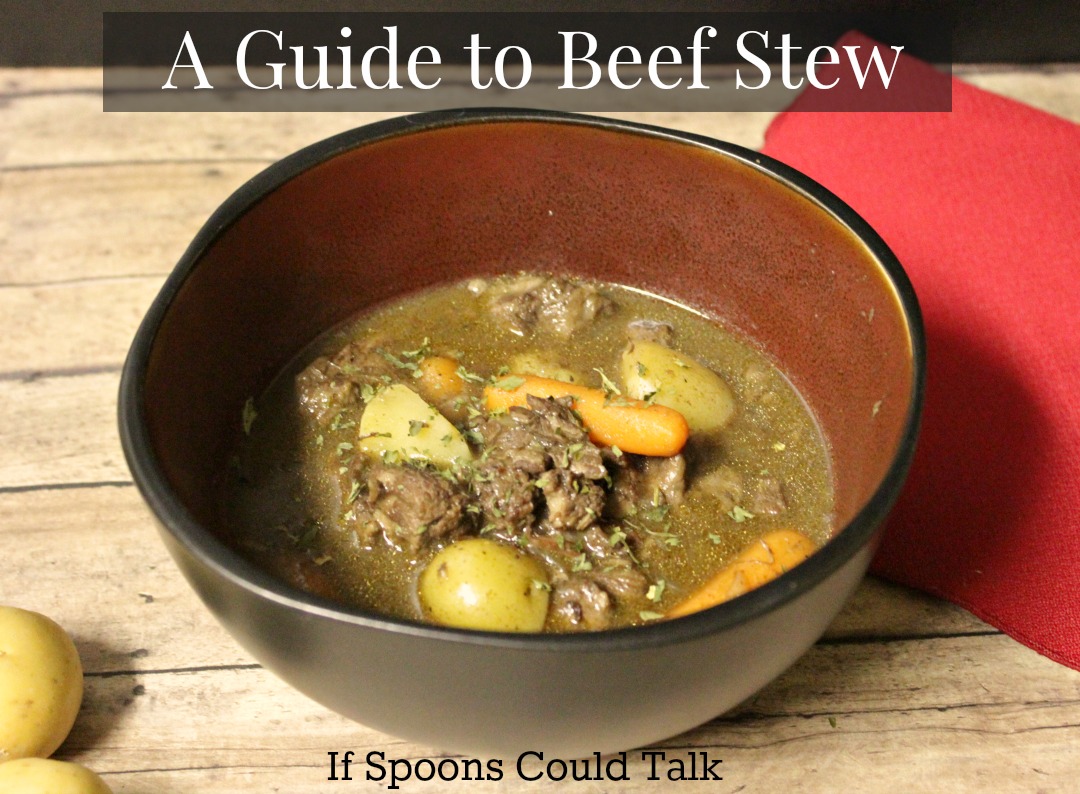Stewing is a method of cooking in which smaller pieces of meat and vegetables are first browned with a small amount of fat, then finished in a closed pan covered with a liquid. This is similar to braising but with smaller pieces of meats and vegetables so that the cooking time is shorter.
Stews have been around for a long time some of the first records being in the 4th century. In a Roman cooking book dated in the 4th there were mentions of stews. Also in a French cookbook in the 14th century. The first written reference to the Irish Stew which is closest to what we term stew now was in 1814. It is safe to say that stewing meat or cooking in a vessel with a closed lid was one of the earliest cooking techniques.
There are many types of stews and almost every cuisine has their own version. While most use the same general steps what they have in them varies. A well-known version is Beef Bourguignon from France uses beef and a red wine. Bouillabaisse is a fish stew from France as well. Chili Con Carne is a popular meat and chili stew that has a combination of American and Mexican flavors. Gumbo, goulash and beef stroganoff are also common stews.
 |
 |
|---|
There are a couple stews that are not as well known that I found interesting and would consider trying. Nihari from Pakistan uses beef that cooked overnight and served for breakfast. I am always up for stew in the morning. Lesco, a vegetable stew with bell pepper and tomatoes from South America, sounds good as well.
Making a Stew
The process is pretty simple once it has started you can leave it while it cooks and go about your business.
- Brown your meat in a small amount of oil or fat. Remove meat.
- Brown onions and garlic.
- Add the liquid slowly, deglazing the pan. Add back in meat.
- Bring to a simmer* and cook until meat is tender. (about 2 hours)
- Add the vegetables into the mixture about 30 minutes before the end.
- Thicken the sauce if desired. You can do this using cornstarch or xanthan gum.
Picking your Stew Meat
The stewing process helps to break down tougher pieces of meat so that they are tender and easier to eat. Following are good cuts of beef to use in a stew. You want to go for a larger cut from the rear end or the front shoulder area.
- English Roast, pot roast
- Chuck, Chuck-Eye Roast, Top Chuck, Chuck Shoulder, Chuck Roast
- Rump roast, Eye Round Roast, Round Tip Roast, Bottom Round Roast, Bottom Eye Roast, Top Round
- Or just get the pack that says stew meat on it. It is one or a combination of a couple of the above cuts.
There are also a variety of other meats that you can use in stews such as lamb, fish, chicken, veal, goat or pork. Using the similar cuts as the beef.
General Stew Tips
- When browning your meat make sure not to overcrowd the pan. Make sure each piece is touching the pan and sear each side. Do this is batches if needed.
- The combination of broth and wine or beer gives a deeper flavor.
- Tomato paste can help add depth to the flavor.
- Most root veggies are good for stews. The common ones are carrots, potatoes, turnips and parsnips.
- Common seasonings are salt, pepper, paprika, thyme, rosemary, bay leaf.
- When starting the liquid should cover all the meat.
- Use a dutch oven or deep stock pot to cook it in.
- You can simmer your stew in the oven.
Keep it THM Friendly
- Don’t use potatoes and limit carrots.
- Don’t use flour or cornstarch to thicken.
- Parsnips, radishes, sweet potatoes are all good veggie options.
- Use a dry wine to keep on plan or skip it all together.
- Depending on what vegetables you use this would fall into a S meal.
*Simmer- liquid is between 185-200 F and small bubbles break through the the surface.
Look for a healthy and scrumptious stew recipe at the end of the week. What kind of stew is your favorite?

Resources: On Cooking 4th Edition, Kitchn.Com, Wikipidea.com




